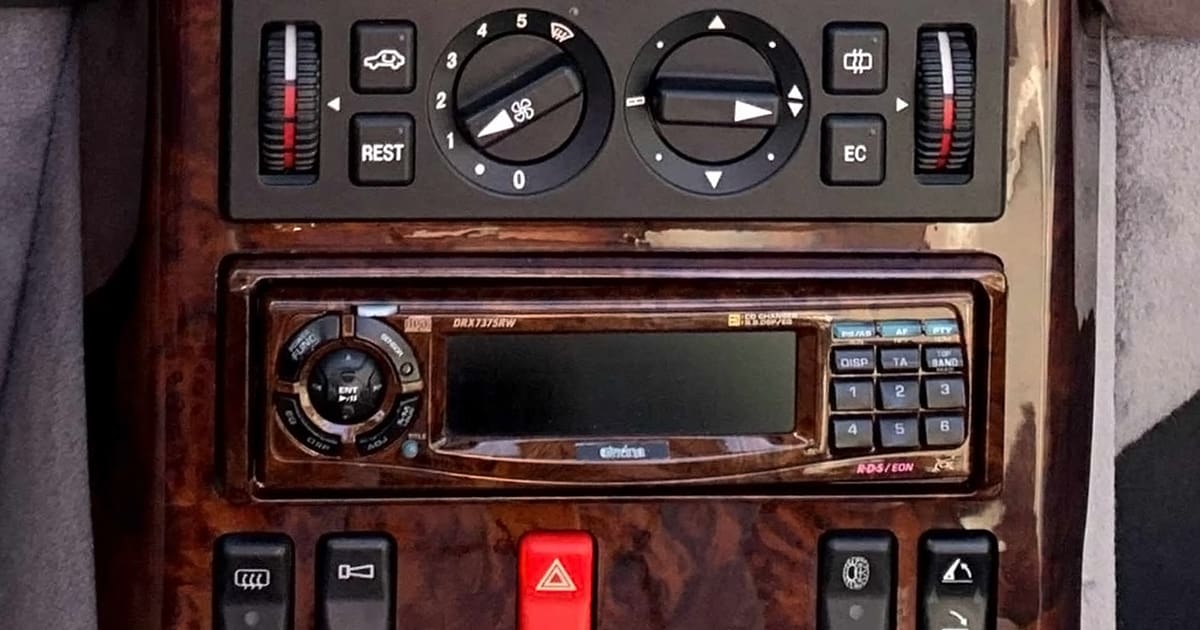If you’re old enough, you might remember that car radios, specifically CD receivers through the late ’80s and ’90s, were full of what seemed like crazy features. Double-DIN multimedia receivers, like we’re accustomed to today, barely existed back then, and we didn’t even have Bluetooth. Radio manufacturers like Sony, Alpine, Clarion, Kenwood, Pioneer, Panasonic, Eclipse, Rockford Fosgate and JVC poured their hearts and souls into making these radios as elaborate and innovative as possible. Let’s check out these blasts from the past.
Crazy Screen Savers
The motivation for this article was a post on Facebook about car radio screen savers by our friend and client Darren Fettik, the owner of Audio Designs and Custom Graphics in Jacksonville, Florida. Indeed, single-DIN CD players with screens no more than an inch tall and a few inches wide had a crazy variety of screen savers. The one that often comes up is the Pig Races and Horse Races screen saver on Clarion source units. Radios of this era had spectrum analyzers and VU meters, and many had full-motion clips of rally racing.

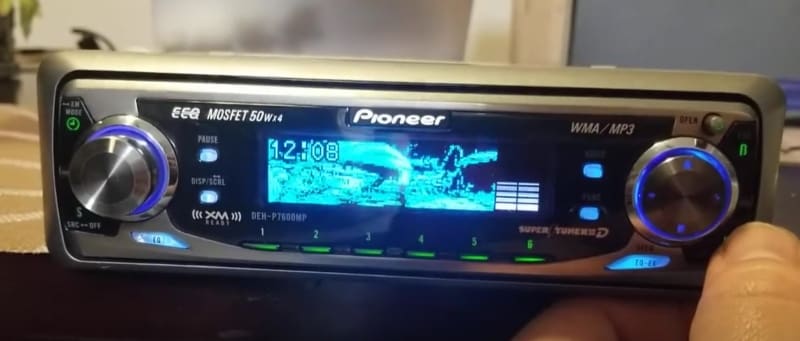
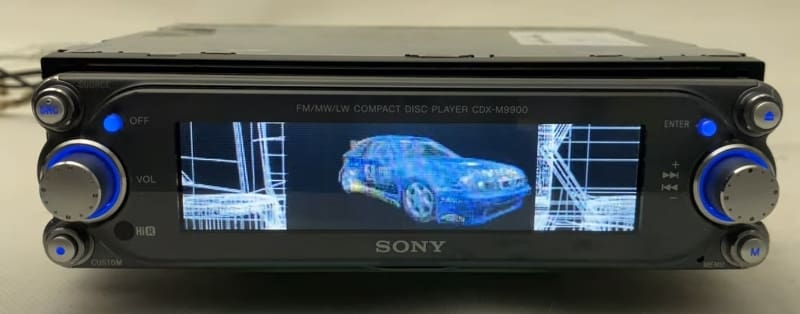
The Fake Wood Grain Era
There was a time when radios with fake wood grain finishes were hot. Yeah, we don’t understand either. The first we recall was a Pioneer tape deck, but they followed quickly with CD players with the same design.
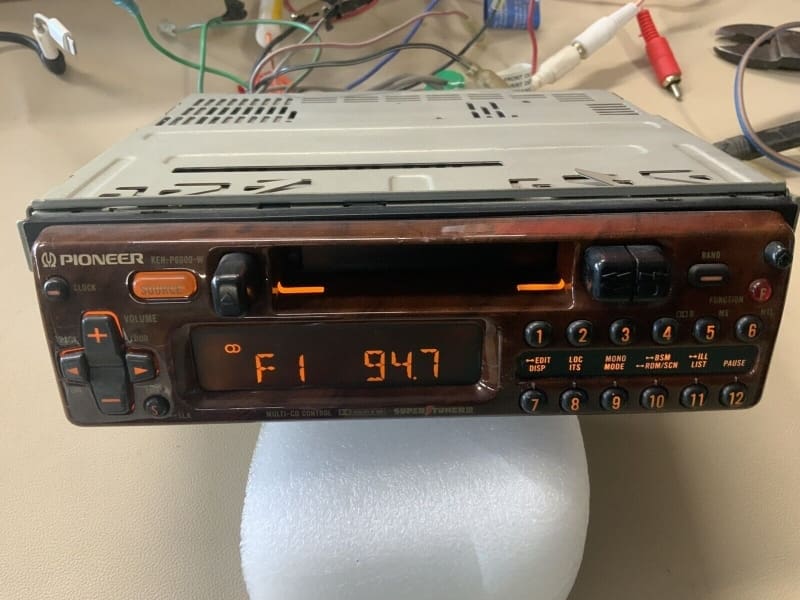
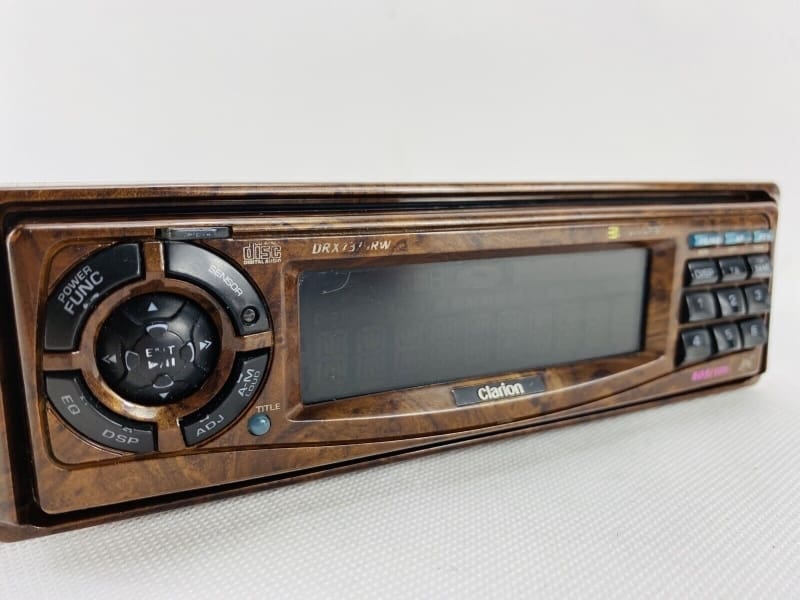
1.5-DIN Radios for GM and Chrysler
Another weird design was tape decks and CD players designed specifically to fit the 1.5 DIN opening found in many Chrysler and General Motors vehicles. These radios usually had larger displays than their standard single-DIN counterparts, but they didn’t do anything special other than fill the hole in the dash better. They sure were easy to install, though.
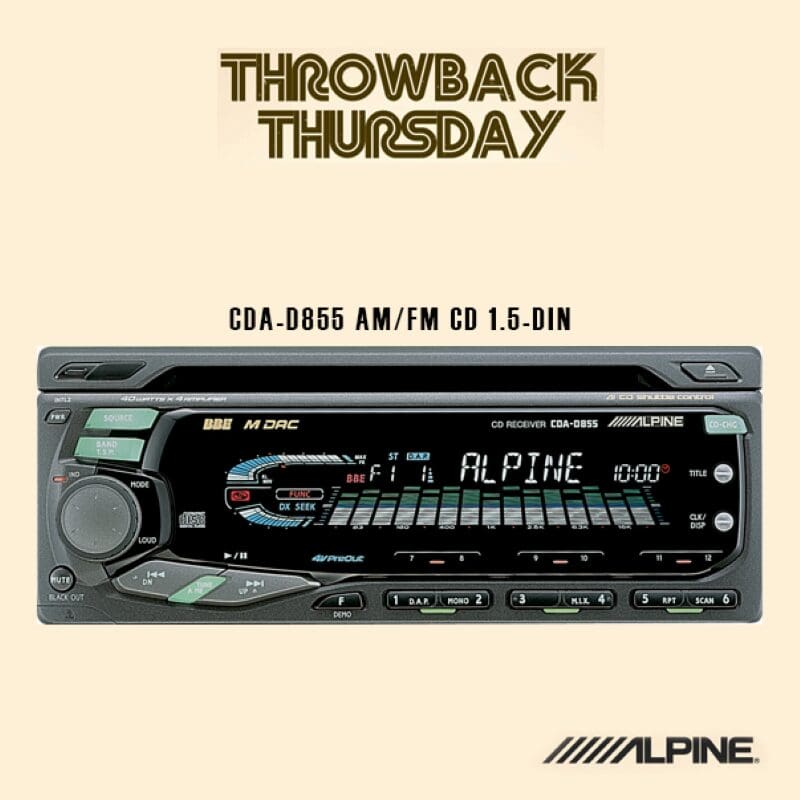
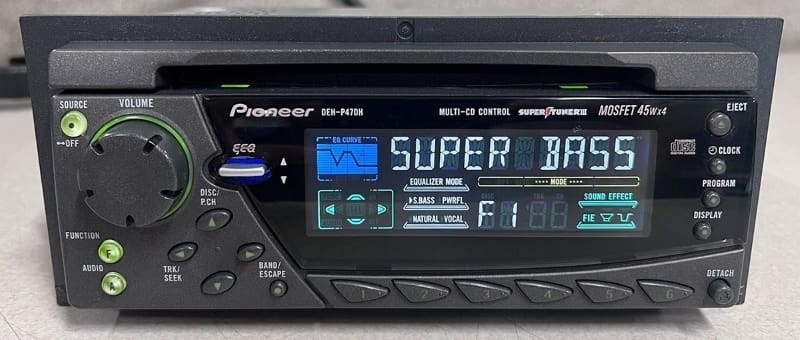
Pull-Out Radios
Removable radios were hot stuff in the late ’80s. These pull-out radios mounted with a DIN-sized sleeve and a quick connector on the back. Lifting a carry handle on the front would unlock the radio from the sleeve so you could pull it out of the dash and take it with you. As they say, thieves can’t steal what’s not there.
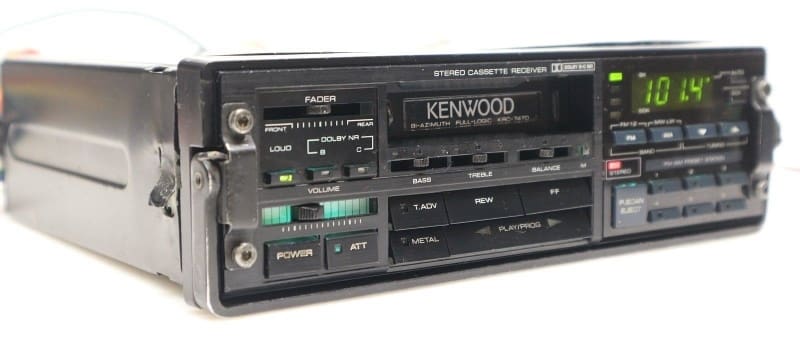
Detachable Face Car Radios
Let’s stay on the radio security theme for a second. When people got tired of lugging around their radio, the next best thing was a radio with a detachable control panel. When not installed, these “removable face” radios often came with a plastic or faux-leather case to protect the faces. Most ended up in the glove box or center console.
Unfortunately, many of these faces became lost or broken, generating many parts sales for radio manufacturers. Some faces, especially those with fancy color dot-matrix displays, sold for hundreds of dollars.
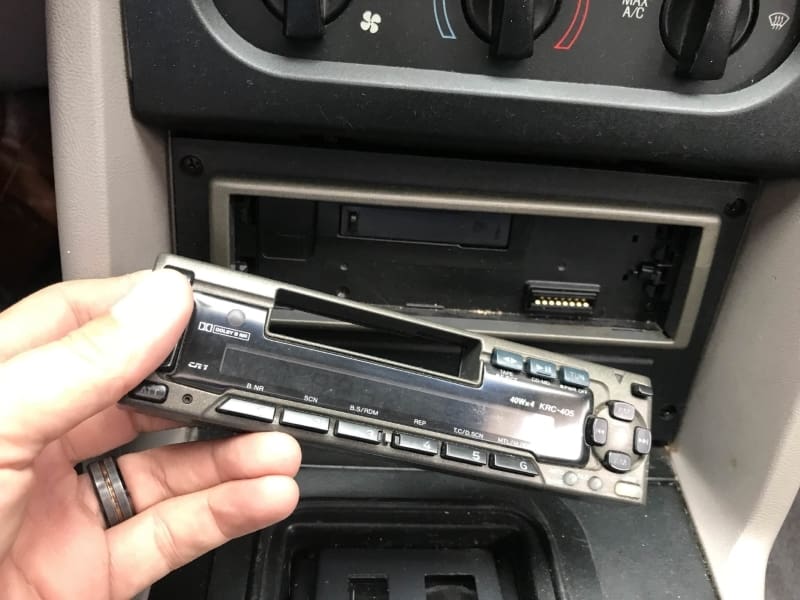
Flip-Face Radios
Flip-face radios were another security feature popular back in the day. The Kenwood MASK and JVC Kameleon decks are great examples of this. When you turned the Kenwood off, the face would motorize into a horizontal position, then flip up, leaving only a black panel showing.
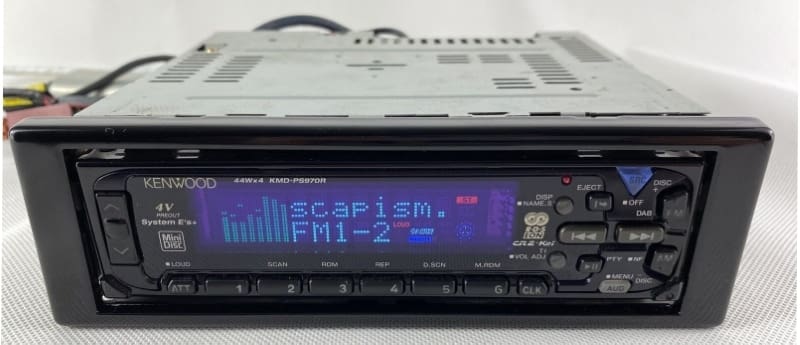
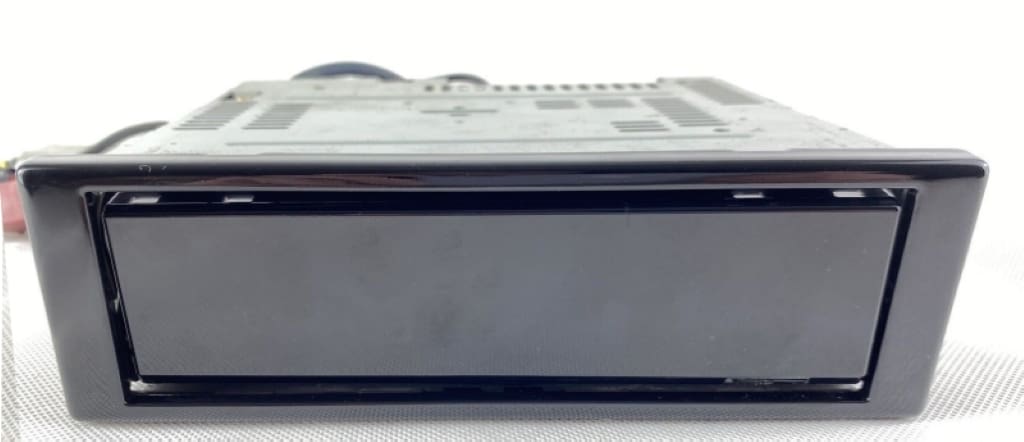
The JVC KD LX1 was another radio designed to be inconspicuous when off. The display and control buttons would go dark, appearing blank when not in use. Power it up, and everything lit up, and a row of buttons motorized out of the bottom. If that wasn’t enough, the buttons would retract and the display would slide down to let you load a CD into the unit. Ah, moving parts on a radio, what a great idea!
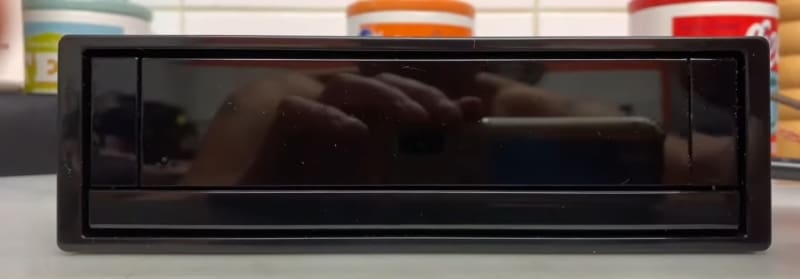
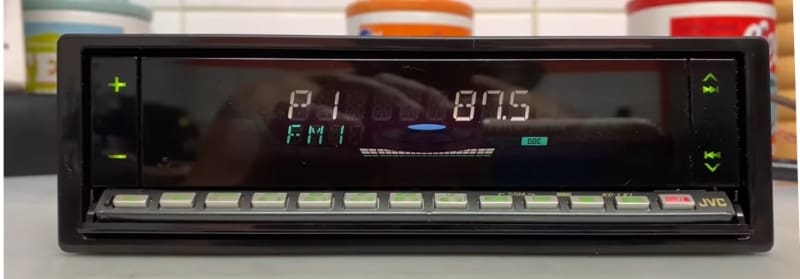
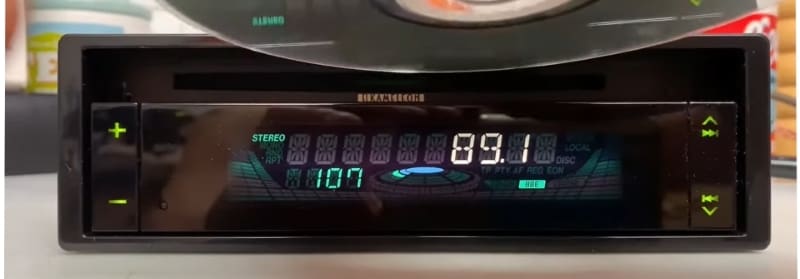
CD Key Security
The Eclipse Security Network was a security feature found on Eclipse radios. When you first powered up the radio, you’d insert a specific store-bought compact disc and the radio would read the disc and store it as an unlock key. If power was removed from the radio, you needed to insert the same disc (or an identical one from a friend) to unlock it.
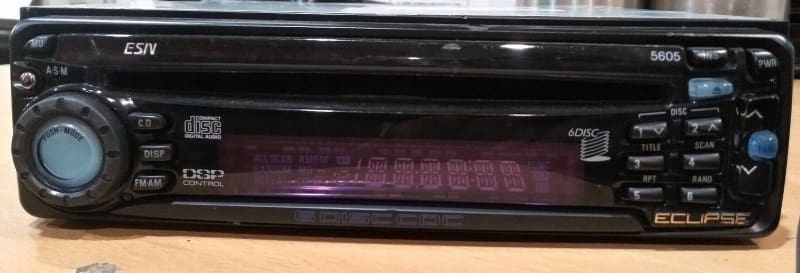
Copper Chassis Radios
Several CD players had a copper-coated chassis. Why? Well, copper is a better conductor than steel or aluminum, so that acts as better shielding for RF noise rejection. In reality, it was likely just a marketing thing. However, most radios with copper plating also have pretty stout features, so even if they were wrapped in the cheapest pot metal case, they’d sound pretty good.
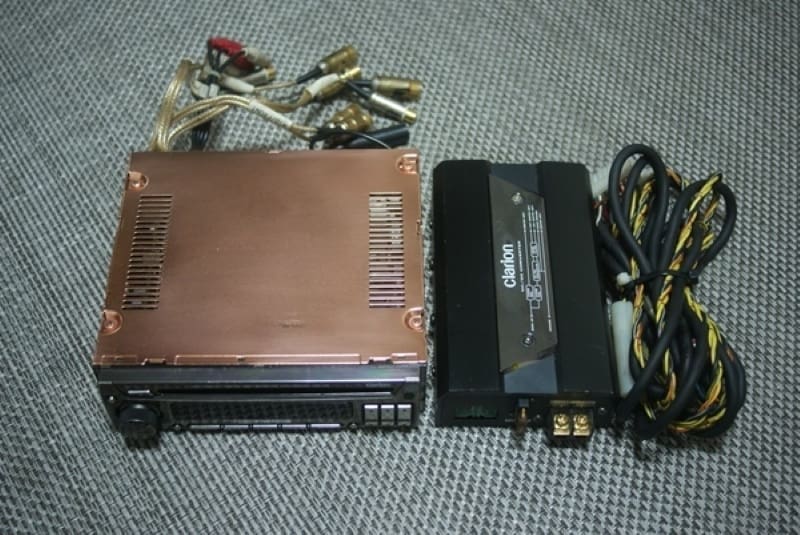
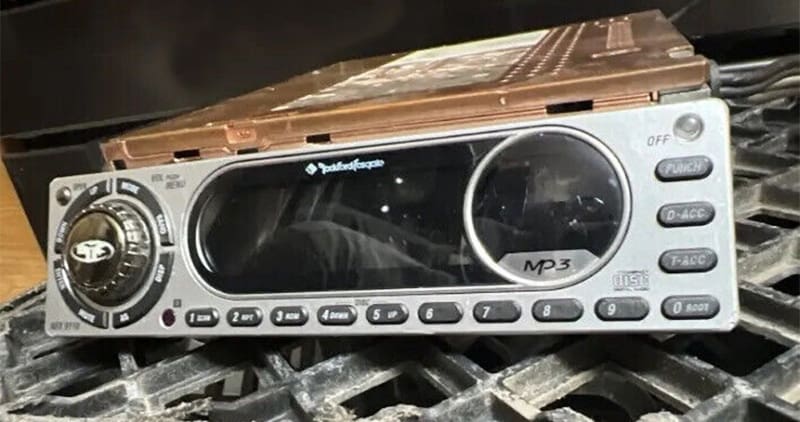
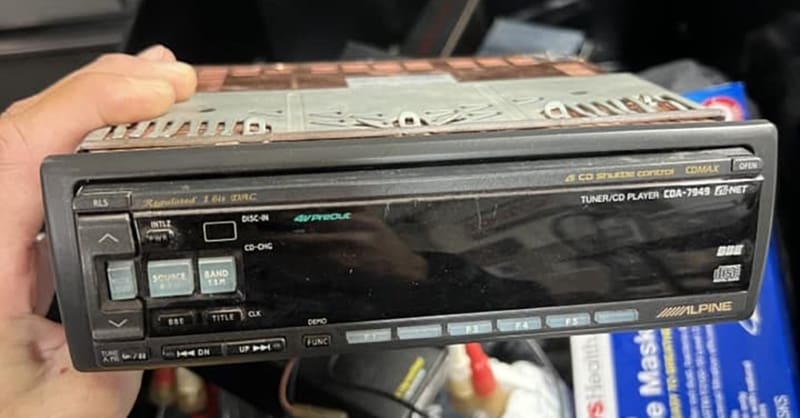
Slide-Out Controls and Trays
Many radios had multi-part front panels or secondary controls that slid out of the radio. We’re talking about more than the motorized controls on the JVC Kameleon. Some radios from Sony and Clarion had two front panels, allowing for larger displays and bigger buttons. Sometimes, the extra panel allowed for more buttons, as with the Kenwood KRC-999 cassette deck.
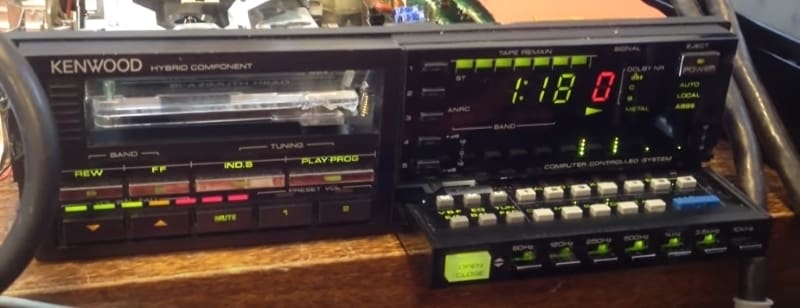
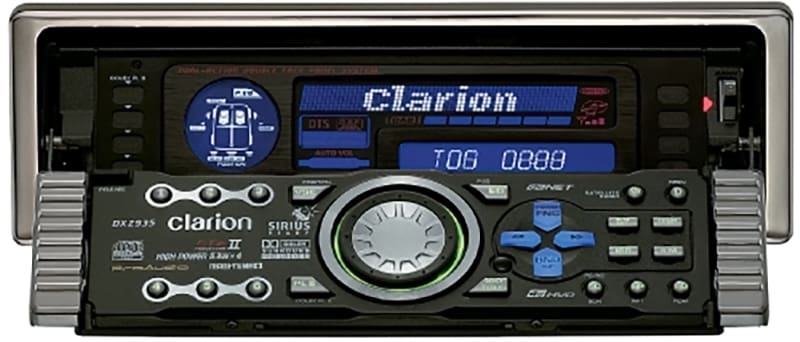
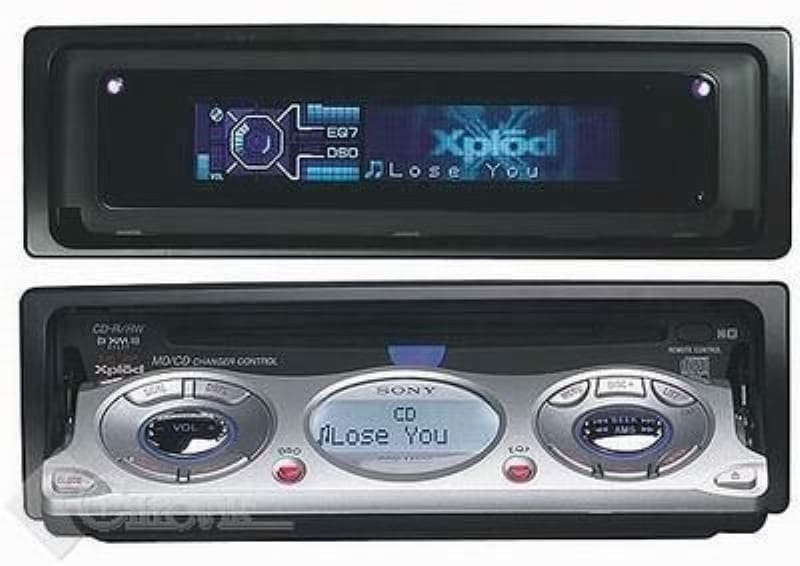
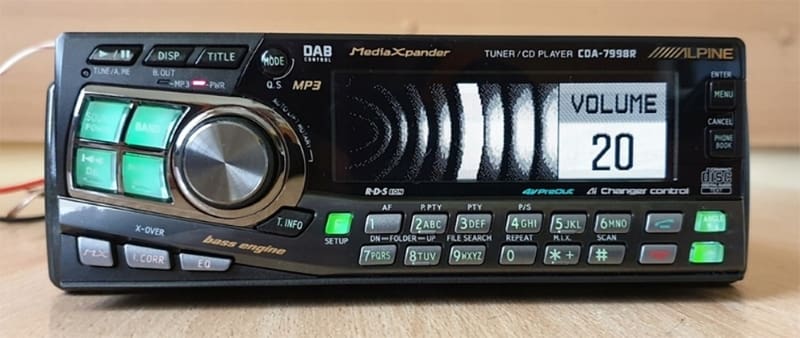
Anti-Skip Features
One problem with compact discs was that the laser mechanism could lose its tracking on the disc if the vehicle experienced a harsh impact. We called this skipping, as it would momentarily pause audio playback. Several companies implemented digital buffers that would store a few seconds of audio information so the music would keep playing in all but the most severe situations. Sony took this to an extreme with its CDX-MP80 and included an isolated CD tray to improve vibration handling even more.
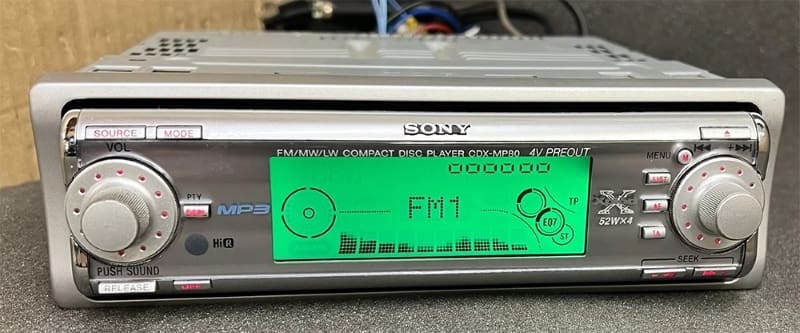
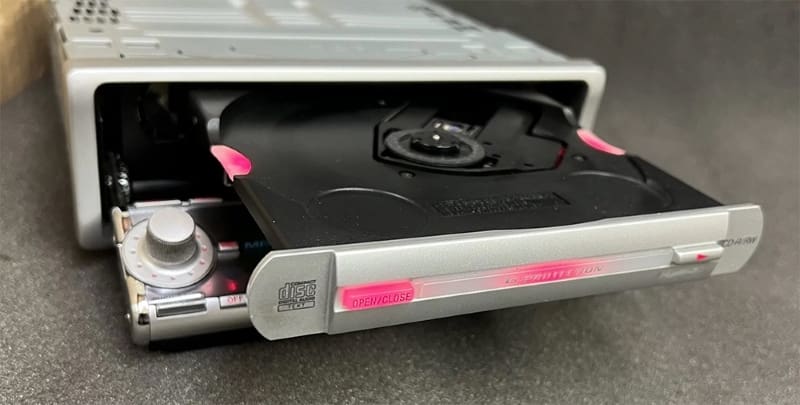
Music Catcher
Clarion had a feature on some of its radios around 2004 and 2005 called Music Catcher. If you were playing a compact disc, the radio could store that song on an internal memory card with the push of a button. It was basically a built-in CD ripping feature. Several quality settings were available, which, of course, determined how many songs you could store.
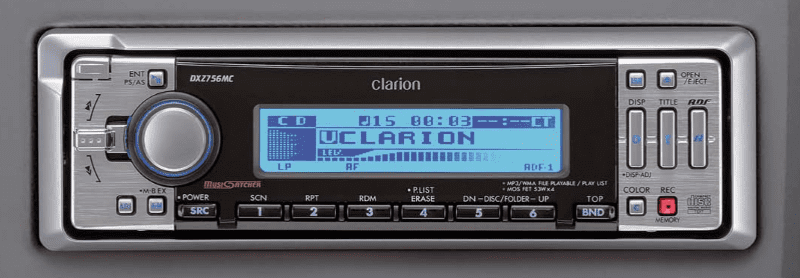
Full-Color Touchscreen Displays
If you thought the graphics on the monochrome dot matrix displays were cool, how about a full-color display that’s also a touchscreen? The Clarion DXZ856MP was a great example of this. You could slide up or down on the right and left sides of the screen to change tracks. It also had a screen saver with the Clarion-sponsored Peugeot WRC rally car ripping down the road.
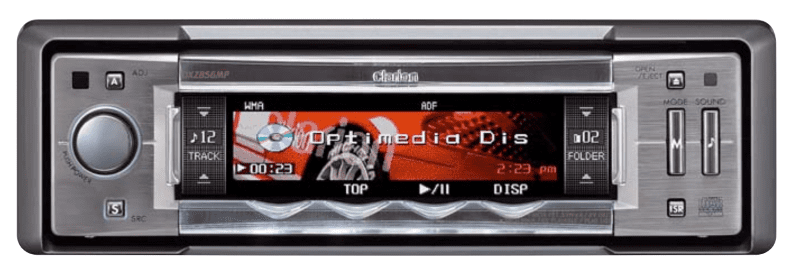
Crazy Illumination
A friend once asked, “What would the car audio industry look like without the invention of blue LEDs?” We admit we had a good laugh about that. Panasonic used LED technology to create its Ghost line of source units. When the sun set, these suckers would light up bright blue. Not just a little bright, but bright enough to illuminate the driver’s face to oncoming traffic.
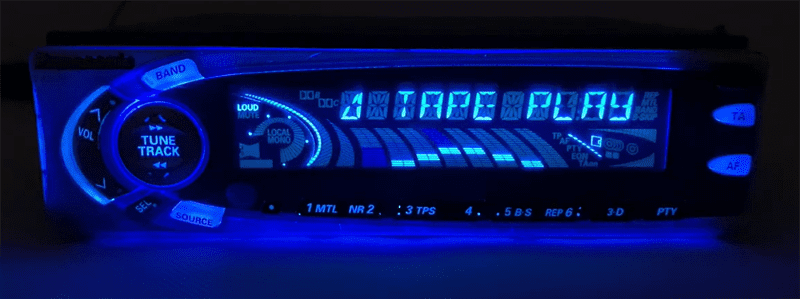
Unique Interface Options
A few CD players had unique interface options for changing tracks. Clarion had its Slidetrak and Alpine the GlideTouch. Clarion’s Slidetrak had a moving plastic cover over the display. You could slide it side-to-side to change tracks on a CD or a USB memory stick or to change radio stations.
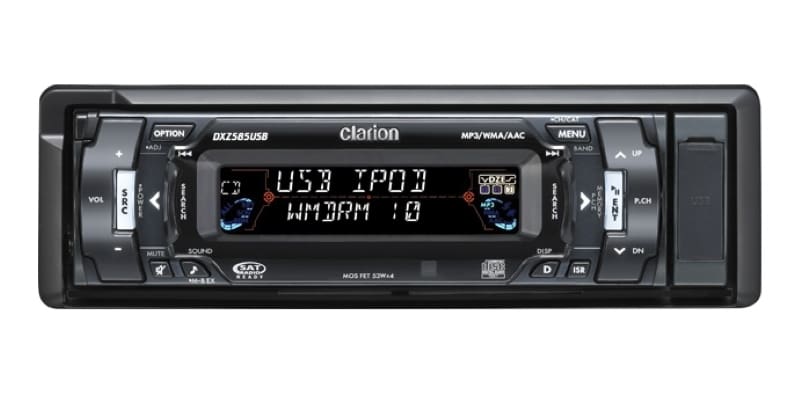
Alpine’s GlideTouch was a silicon rubber strip along the bottom of the display. You could slide your finger across it until you found your desired feature. It worked sort of like a touchpad on a laptop computer.
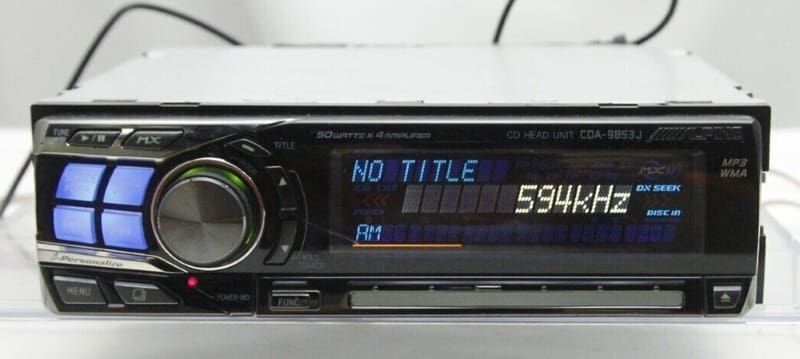
Built-In Center Channel
Panasonic was a big name in car radios back in the day. They still do a lot of OE work for companies like Acura. They had a CD player called the CQ-DRX900N that featured a motorized flip-out center channel tweeter. Just when you thought all you had to worry about in terms of clearance was the CD loading slot, Panasonic stepped things up. The feature was also on a few of Panasonic’s single-DIN DVD source units. Many remember the “ching” sound as it opened or closed.

CD Changer Control
CD changers with both aftermarket and factory-installed audio systems were very popular. Accessing six to 18 discs in a few seconds was a huge convenience. Companies worked tirelessly to speed up the disc-swapping speed. Alpine took things further when it launched the 7980 – a three-disc, in-dash single-DIN deck.
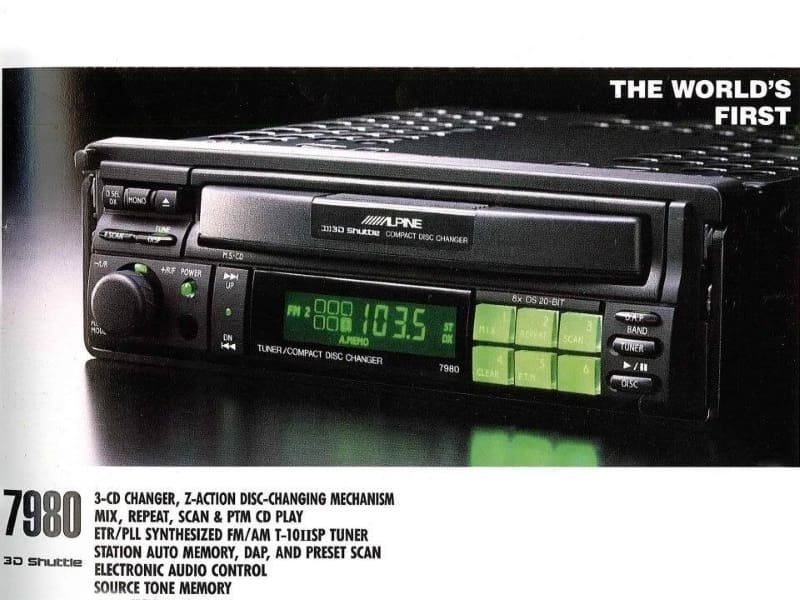
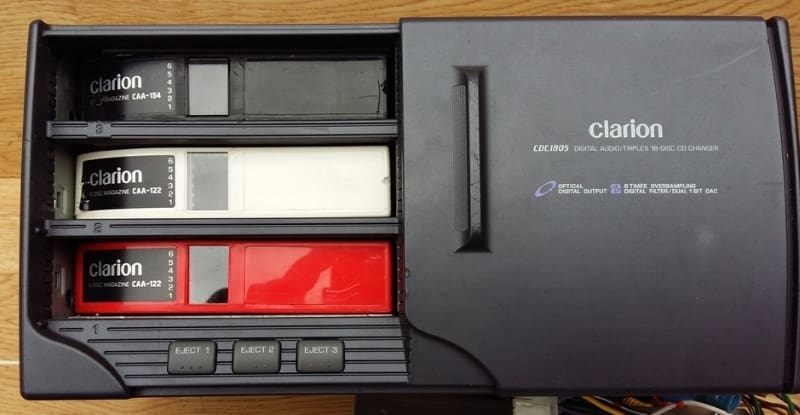
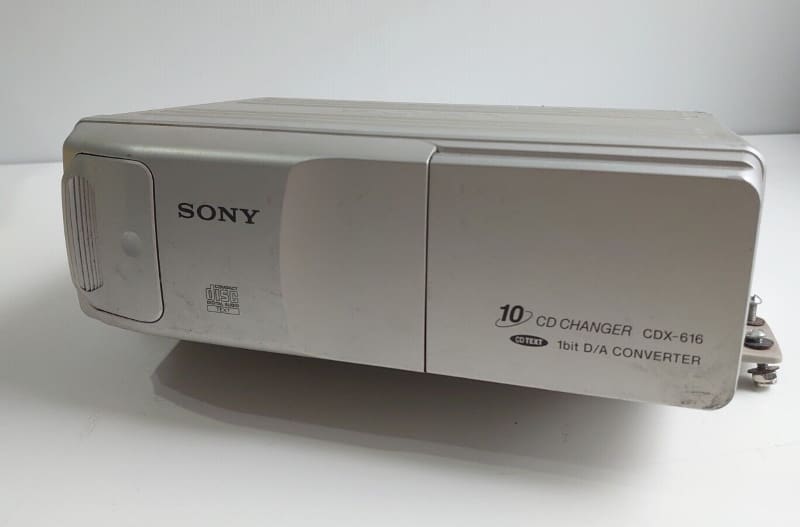
Digital Storage Options
While we’re used to carrying large amounts of music on a USB memory stick, this sort of thing wasn’t an option a few decades ago. Several companies devised their own way to store MP3 and WAV files and produced solutions that acted like CD changers so you could have all your tunes available.
Kenwood’s KHD-CX910 Music Keg included a 10 GB cartridge that connected to a docking station. The station connected to CD-changer-compatible radios. A secondary docking station for your computer allowed you to upload music files using the PhatNoise Music Manager software.
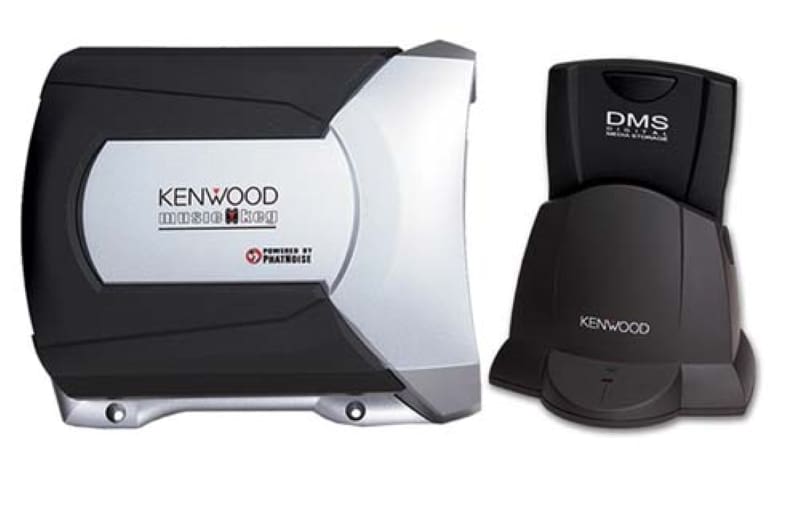
Rockford Fosgate had a similar concept for its source units called the RFX MP3.8. This system included an eight-bay dock that connected like a CD changer and used multimedia cards for storage.
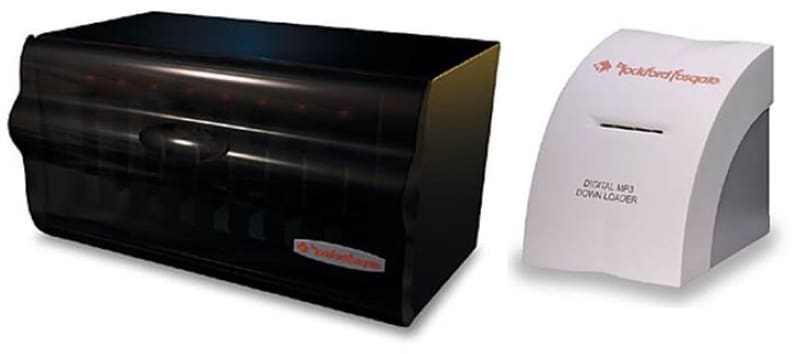
CD Tuners without Amplifiers
Another feature in higher-end source units was the lack of a built-in amplifier. Rather than being called a CD receiver, these source units are called CD tuners. Classics like the Clarion DRZ-9255 and Alpine 7909 are epic examples.
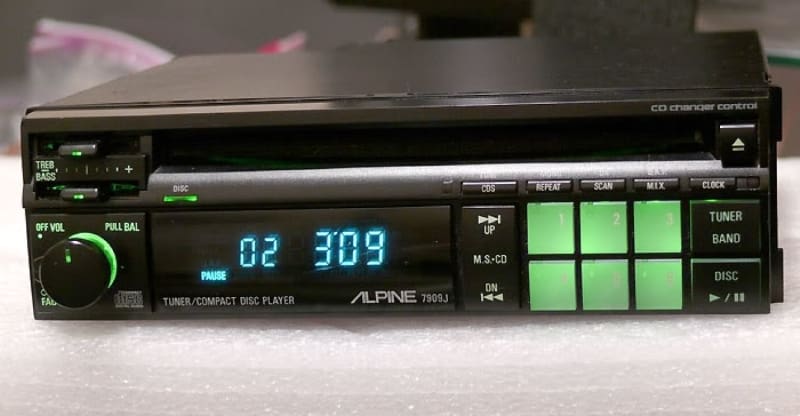

Vacuum Tubes
At the opposite end of the audio quality spectrum from the high-end CD players mentioned above, we have the Panasonic CQ-TX5500W. This double-DIN radio included a tuner, CD mechanism and an auxiliary input. Aside from the analog VU meters on the front panel, the highlight was a vacuum tube located front and center. This radio garnered the name “Tube Head.” If you know how vacuum tubes work, you’ll know they’re a recipe for unwanted harmonic distortion. Was the Tube Head cool? Oh yeah, totally!
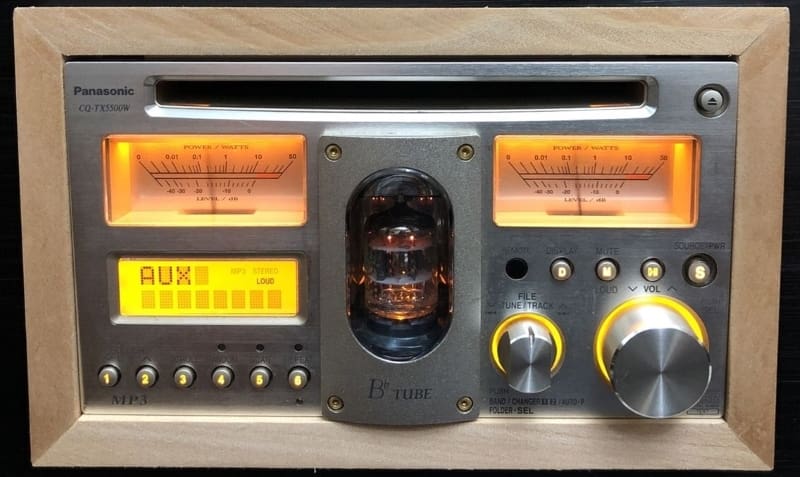
The Radio Stack
As we approach the end of this article, we can’t overlook the radio stack. Many automobile manufacturers used separate tuner, equalizer and tape deck modules as their in-dash solutions. In the aftermarket, having a ½-DIN 15- or 20-band EQ above a CD player or a DSP controller underneath it was a sign you wanted to be serious about your sound.
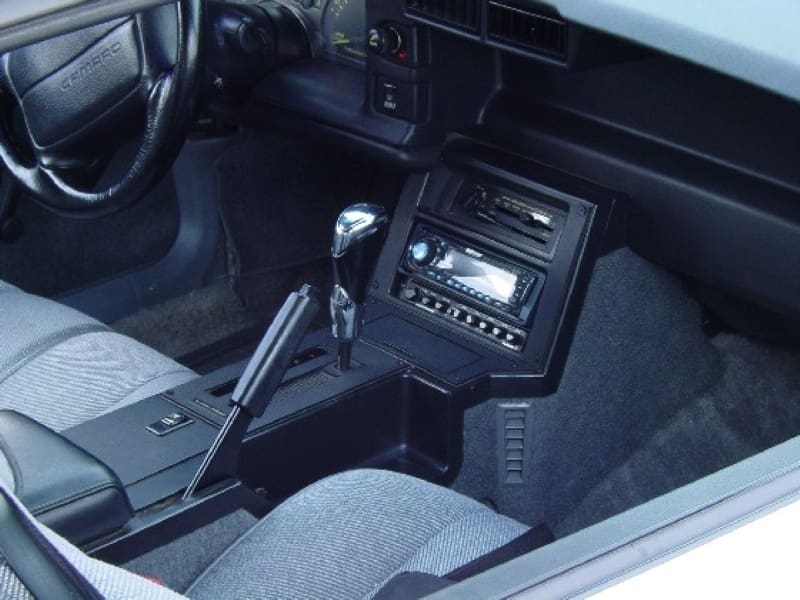
Clarion AutoPC and CAL1000
We’re not sure what they put in the water in at Clarion HQ back in the day, but those lads never let up on creating source units unlike anything else on the market. The Clarion 310C AutoPC ran an early version of Windows CE and featured basic voice recognition capabilities and navigation software. Remember, this was back in 1998, when a state-of-the-art cell phone was the Motorola StarTAC flip-phone.

Before the AutoPC, Clarion had the CAL 1000. This was a single-DIN radio that included a built-in cellular phone. The system included a wireless handset that communicated via a pair of IR transceivers in the vehicle headliner.
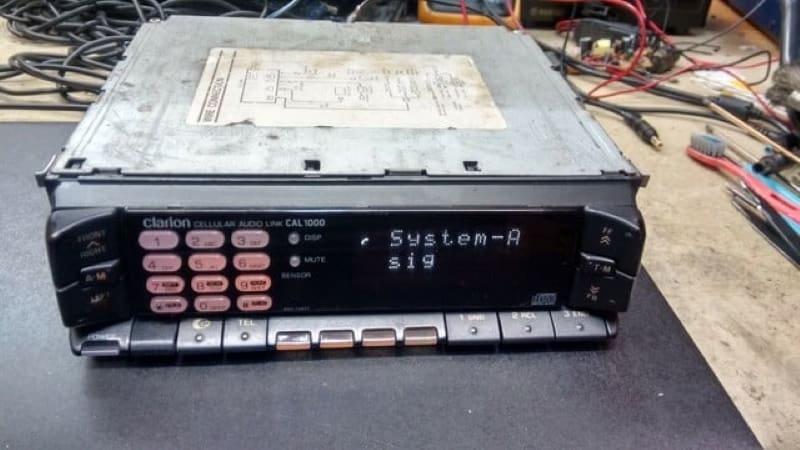
Crazy Radio Features Made Car Audio Fun
When most of these source unit solutions were popular, the brands behind them created new products every year. These days, the technologies aren’t changing as quickly. Many companies have offered the same single-DIN source units for years, putting all their focus into multimedia units that are essentially small computers in the dash. Even though things have changed, it’s fun to reflect on what made car audio source units so exciting and unique.
Lead-In Image: Thanks to Ake Nyberg from Mariefred, Sweden, for the great shot of his wood grain Clarion DRX7375RW installed in the dash of his 1992 Mercedes-Benz 500SL.
